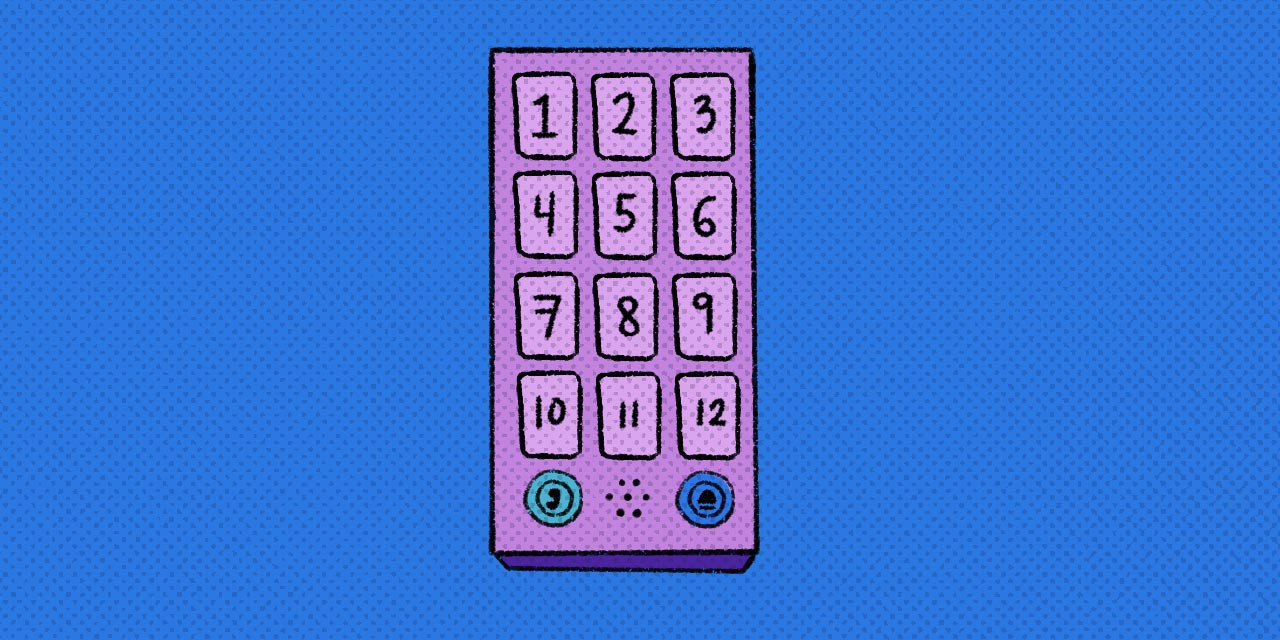The Japanese counter 階 (かい/kai) is a simple but useful one. On its own, it's used to count floors in a building—i.e., the "third floor" would be 3階. When you add 建て (だて) to it, you're indicating that the building is x stories tall—a three-story building, for example, would be 3階建て.
- Pronunciation of Japanese Counter 階
- Specifying the Floor of a Building
- An X-Story Building
- How Far Will You Rise?
Pronunciation of Japanese Counter 階
Before we get to 階's two use-cases, let's look at situational pronunciation. Be aware that there are times when the number used with 階 will shorten and when the counter will rendaku. The chart below explains it for you:
| Numeral | Japanese | Reading 1 | |
|---|---|---|---|
| 1 | 一階 | いっかい | |
| 2 | 二階 | にかい | |
| 3 | 三階 | さんかい/さんがい | |
| 4 | 四階 | よんかい | |
| 5 | 五階 | ごかい | |
| 6 | 六階 | ろっかい | |
| 7 | 七階 | ななかい (しちかい) | |
| 8 | 八階 | はちかい/はっかい | |
| 9 | 九階 | きゅうかい | |
| 10 | 十階 | じゅっかい (じっかい) | |
| 11 | 十一階 | じゅういっかい | |
| 12 | 十二階 | じゅうにかい | |
| 13 | 十三階 | じゅうさんかい/じゅうさんがい | |
| 100 | 百階 | ひゃっかい | |
| 1,000 | 千階 | せんかい | |
| 10,000 | 一万階 | いちまんかい | |
| How many/Which floor | 何階 | なんかい/なんがい |
Since its only role is to count or identify the floors of a building, it's very straightforward.
If you learned the general counter pronunciation rules from our Japanese Counters Guide, you'll notice that the rules for 階 are very similar. The only exception is 3階 (the third floor), which can stay as かい or rendaku to がい, depending on the speaker's preference. The same applies to when you ask "Which floor?" or "How many floors?" with 何階—it can be pronounced either なんかい or なんがい.
And this かい/がい rendaku is somewhat special to the 階 counter, too. In these situations, the counter 回 (also かい) does not rendaku, despite being a homophone. Try not to mix them up—if you're not sure, stay consistent and don't rendaku either of them.
Now let's get into how to use 階. Since its only role is to count or identify the floors of a building, it's very straightforward.
Specifying the Floor of a Building

The simplest use-case of this counter is to specify the floor of a building. To do this, all you need is the number plus 階. The first floor would be 1階, the third floor 3階, and the hundredth floor 100階. Easy!
- トーフグのオフィスは三階にあります。
- The Tofugu office is on the third floor.
- 犬用の服の売り場は12階です。
- The dog clothing shops are on the twelfth floor.
- 二階にもトイレがあるよ。
- There is a bathroom on the second floor, too.
- 何階に住んでるの?
- Which floor do you live on?
Other than the pronunciation trifles mentioned above, there's not much more to 階 than that.
An X-Story Building

- 4階建てのバスに乗ってみたいんです。
- I want to ride a quadruple-decker bus.
You'll also see 階 used as part of the indication of the height (in floors) of some kind of structure, which is written as 建て. To refer to an x-story building, for example, just add the suffix 建て (だて) after 階.
To specify the type of building or structure, add の+[structure]. A 3階建ての家, for example, would be a "three-story house." A 3階建てのバス would be a "three-story bus." Remember that things other than buildings can have three stories!
- あそこに八階建てのビルが建つ予定らしいですよ。
- I hear there is a plan to build an eight-story building over there.
- 4階建てのバスに乗ってみたいんです。
- I want to ride a quadruple-decker bus.
Also, don't forget: 階 can rendaku when it's asking how many floors/stories, or if there are three floors or stories to whatever it's describing.
- このマンションは何階建てですか?
- This apartment is a how-many story building?
- コウイチの家は33階建てです。
- Koichi's house is a thirty-three-story structure.
How Far Will You Rise?
Didn't we tell you the 階 counter was simple? And yet it comes up a lot. For example: what if you stepped onto an elevator with someone, and you're the one standing nearest the buttons? It's polite to ask him or her which floor they're going to. Conversely, what if someone asks you the same question? You need to be able to say, 「4階、おねがいします」. With all the tall buildings in Japan, you're certain to find plenty of situations where this counter will come in handy.
Next time you're hungry for counters, check out some of the other "deep dive" articles we've written: 回, 台, and 個 are solid choices.
And if this was your first counters experience, we suggest you read about the basics of Japanese counters, and then head over to the big Japanese counters study list we put together, which also has links to every in-depth counters article we've done so far.
-
Cells with multiple entries divided by a
/indicate multiple pronunciations that are equally common. Cells with entries in parentheses indicate that the parenthesized word is an uncommon or archaic pronunciation. ↩
